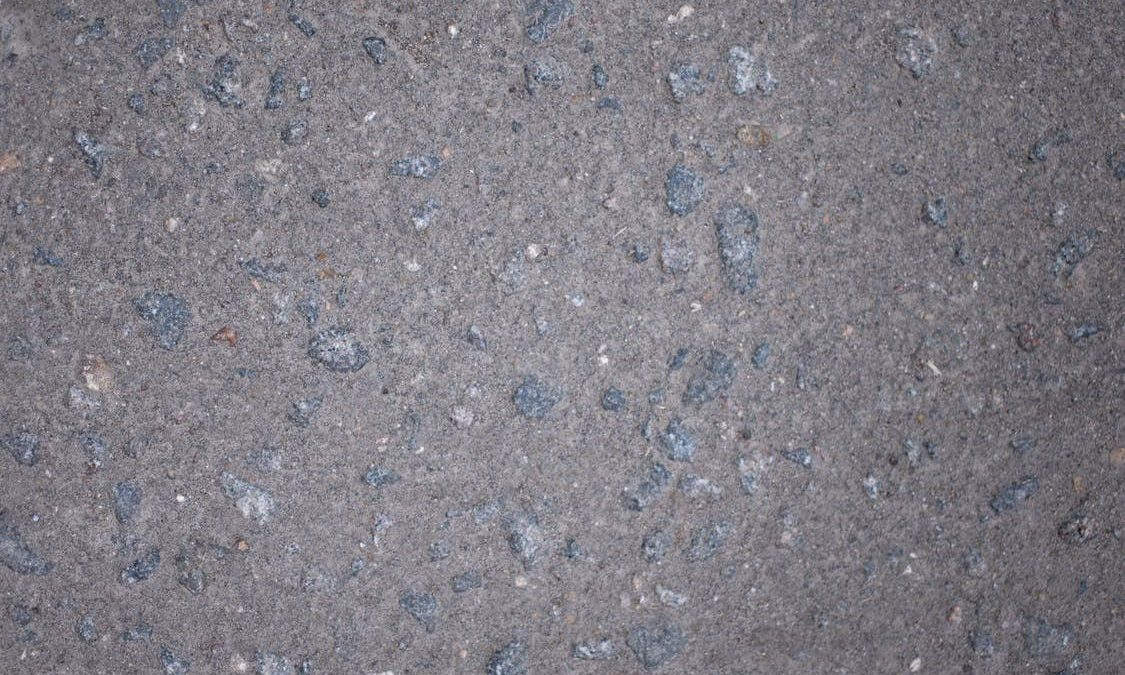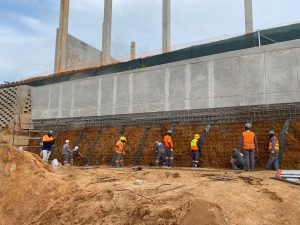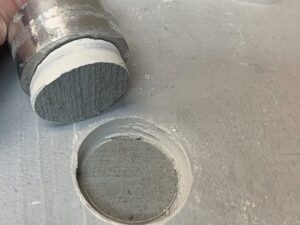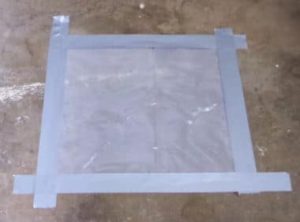By Sheldon White
Concrete abrasion resistance is an important consideration for certain structures. These include those that carry continuous vehicle traffic or that are subject to ongoing scouring due to the movement of water or other liquids that contain particulate matter. Examples of structures that can be affected by concrete abrasion include floor slabs, exterior pavements, dams and spillways.
Concrete abrasion and its impacts
Concrete abrasion is usually not a structural concern but can have adverse impacts. These include dusting and a reduction in the expected lifespan of concrete elements. Generally, abrasion resistance of concrete is proportional to the compressive strength of the construction material. As compressive strength improves so does the ability of concrete to resist abrasive forces. Other factors that influence the abrasion resistance of concrete include finishing and curing operations. Concrete’s abrasion resistance may only be a small percentage of its compressive strength when curing is inadequate and incorrect finishes are deployed.
Concrete abrasion managed
Concrete abrasion can be managed. To counter severe concrete abrasion, special dry shakes or topping mixtures are sometimes specified. Dry shake hardeners use hard aggregates and Portland cement or other binders to provide resistance to concrete abrasion. They generally consist of metallic aggregate and non-metallic aggregate types.
However, the use of dry shake hardeners requires trained personnel and specialised processes. Cements have changed over the years. They are finer and, therefore, produce less bleed water. To work correctly, dry shake hardeners require bleed water. This means that, in many instances, the concrete mix design needs to be modified to use dry shake hardeners. This requires close coordination between contractors and concrete suppliers.
Abrasion resistance and more benefits
Abrasion resistance of concrete is also improved with the use of our colloidal silica post-placement pozzolan technology. Our colloidal silica post-placement pozzolan technology achieves greater depth of reaction and more consistent coverage. There are also less health and environmental concerns using SCP. Our colloidal silica post-placement pozzolan technology also improves the overall finisher success by reducing the variables and timing demands of the process.
PERFORMANCE OF SCP VERSUS DRY-SHAKE HARDENERS
| Dry-shake hardeners | SCP technology | |
| Increased Abrasion Resistance | Yes | Yes |
| Provides Curing Equal to Moist Curing | No | Yes |
| Decreases Drying Shrinkage | No | Yes |
| Provides Water Penetration Resistance | No | Yes |
| Decreases Chloride Diffusion Rate | No | Yes |
It is important to note that SCP may replace some dry shake hardeners at the discretion of the design professional. However, there are a few applications where shake-on hardeners cannot be replaced by SCP products. They include but are not limited to:
- When the dry shake hardener provides a pigmented surface.
- When the shake on is an iron-based hardener with metal aggregate fines and intended for a specific application.
- When a high shine polish is required for reflectivity unless the option is given to polish later in the process.






